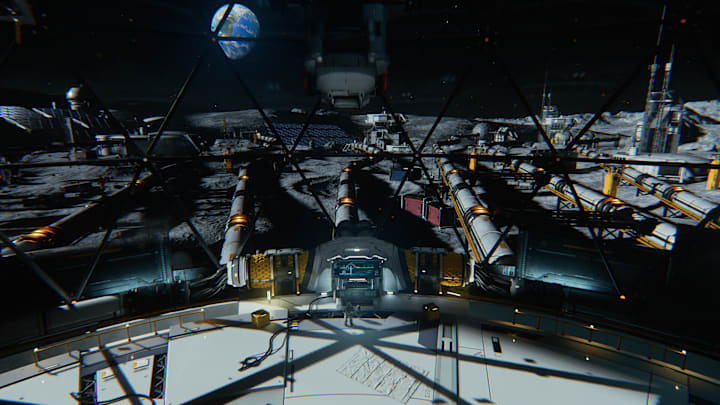Pragmata cleverly mixes different gameplay styles
By Ryan Woodrow

When a game disappears like Pragmata did after its initial announcement back in 2020, it’s always hard to judge what state it will be in when it finally reemerges. Will it have a new lease on life and a renewed vision, or will it be limping out the door just so everyone involved can move on with their lives? Thankfully, from the small amount of early gameplay I got to try recently, it feels like Pragmata is more of the former.
Starting out on a seemingly abandoned moonbase, our cute little girl droid, Diana, and her soon-to-be surrogate father, Hugh, quickly find themselves set upon by the automated droids that serve as the base’s security. Their armour is impenetrable to Hugh’s gun, so instead Diana has to hack them to expose their weak points before Hugh can open fire.
In gameplay, these two sides mix together well. You’ll be using the analogue sticks to aim and move as Hugh, and while aiming at an enemy, it brings up a grid for Diana’s hacking minigame, which you play in real time while still trying to dodge incoming attacks as Hugh.
To hack, Diana brings up a grid. These vary in size depending on the enemy, but the basic droid uses a 5-by-5. On this grid, you use the face buttons to navigate from square to square, creating a path around the grid that intersects with the randomly positioned exposure nodes before reaching the exit node, which is also positioned at random. It’s a little like Snake, as you can’t cross your own path, so you have to avoid trapping yourself as you navigate around.
A successful hack exposes the enemy’s weak points, so then Hugh can go to town blasting them away with either his infinite ammo pistol or one of the few specialty weapons you can pick up along the way.
While solving a puzzle and dodging attacks simultaneously may seem a bit much at first, the control scheme is cleverly designed to make it really easy to do both at once. The dodge button is on RB, and moving around the puzzle grid is done with the face buttons, with Triangle being up, Circle being right, and so on. I initially thought it was weird to do it this way rather than using the d-pad, but in motion, it works so smoothly, with your left hand only needing to focus on aiming while your right hand does all of the work. Despite the amount of description it takes to get across, it’s deceptively simple when you get your hands on it.
This loop is satisfying, and while my time with the game was brief, I did get to see a hint of where the complexity in this system could lead. Partway through, I picked up a limited-use hacking node that further lowered the enemy’s defenses. When you have one, it will appear in every hacking grid, and it’s up to you whether or not you want to use it, which will consume it. It adds an extra layer of thought into the hacking as creating a path that either includes it or avoids it takes just that little extra bit of brainpower that can be crucial when you’re also focusing on dodging attacks.
This dose of Pragmata’s gameplay showed me a solid foundation, but it will live and die on how it adds complexity to its systems as the game progresses. I can see a version of this game that doesn’t evolve enough, leaving the fun to peter out long before the finish line, but I can also see a version that gives a very satisfying difficulty curve with engaging combat. Either way, I’m excited to see more of what it has to offer.
More features on DBLTAP:
feed